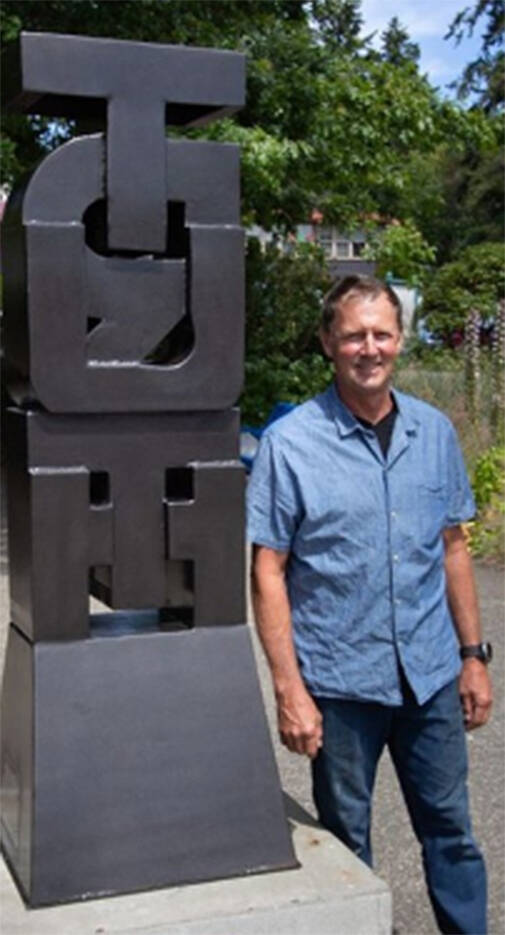The Public Art Committee was scheduled to discuss its Something New Rotating Public Art Display program at the Bainbridge Island City Council meeting Tuesday.
The committee received 33 submissions and selected five.
“Fertility” by Jennifer Kuhns of Elma is at Winslow Way and Erickson Avenue. It is hollow but weighs about 40 pounds and is a sealed terracotta egg covered in stained glass and beads, forming two fantastical birds on one side, a Tree of Life on the other, and filled in with bright flowers, bees, ladybugs and butterflies.
“Truth” by Macrae Wylde of Hood River is at south Madison Avenue overlook. The sculpture is a reminder that truth is an ideal we should aspire to promote. It cares not where you come from or who your parents were, it does not care what party you belong to or what group you are part of. The sculpture is a reminder of the importance of Truth.
“Wandering Trees” by Shawn Johnson of Seattle is at City Hall. As in Native American totems, the stacked base method totemically heightens the sculpture itself. The theme of the “wandering tree” grows out of the ground like a tree trunk. The large pipe base can be used as a lantern, with a floodlight installed, with its leaf-like images.
“Cardinal Connection” by Jan Joy of Whidbey Island is at Waterfront Park. It is fabricated from bronze sheet metal that entails developing a pattern, cutting the flat sheet metal, bending and forming the pieces, welding the pieces together, and grinding and sanding the seams. At the center is a connecting ridge, hence the “cardinal” connection.
“Steel Sketch” by Ed McCarthy of Renton also is at Waterfront Park. It represents a line drawing of geometric shapes colliding in air as it would appear if constructed in space.
“Fossil 11” by Lin McJunkin and Milo White is the People’s Choice winner. Cast glass hexagons fill the metal forms with nature’s colors of aquamarine and spring green. “It is our sincere hope that a solution is found to the Colony Collapse Syndrome experienced worldwide by beekeepers and caused in part by pesticide use and our warming climate before bees become fossils themselves,” McJunkin says.



